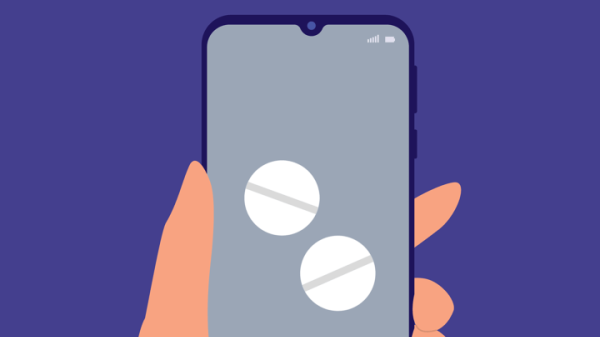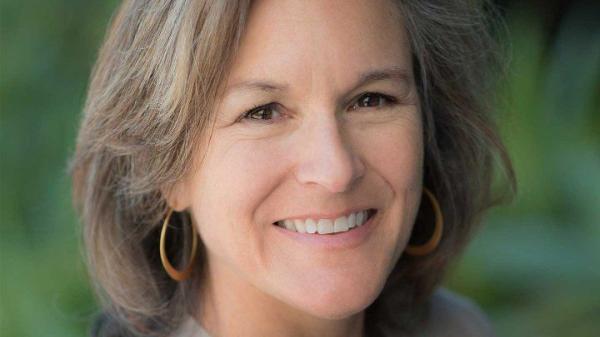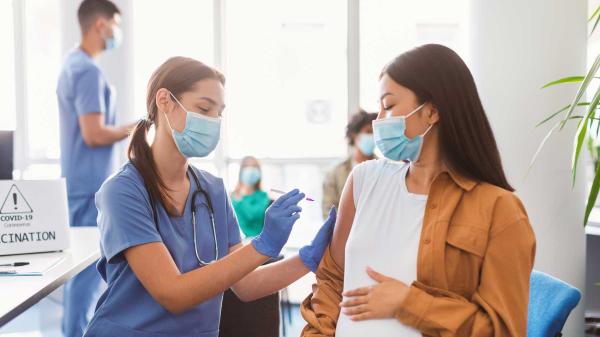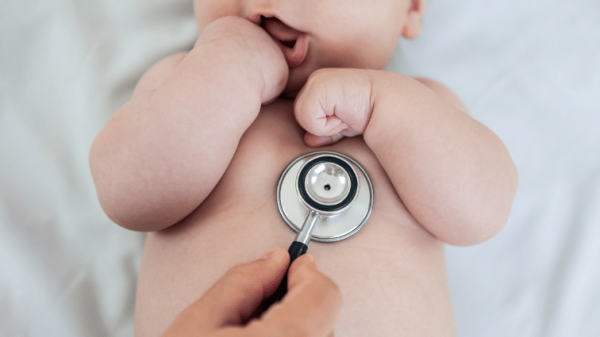By Grant Burningham and Susan Levings
lynda-frassetto-portrait.jpg
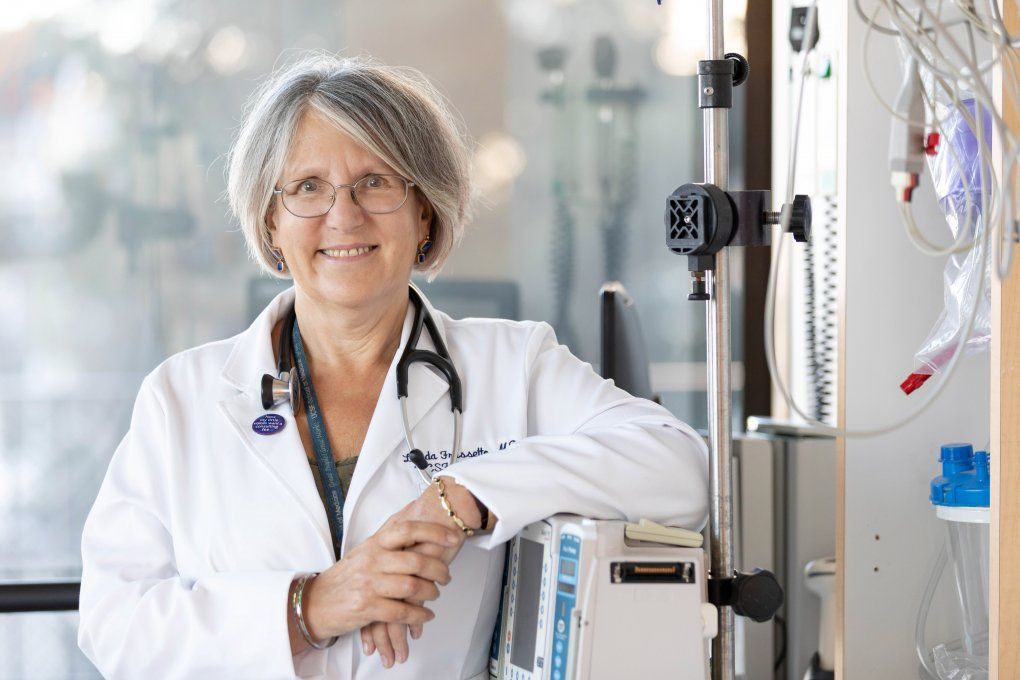
March 12 is World Kidney Day, and it is estimated that at this time more than 37 million Americans are living with chronic kidney disease and almost 750,000 Americans are dealing with the stark reality of end stage renal disease (ESRD) because their kidneys no longer function well enough to sustain life on their own.
In July 2019, the Executive Order on Advancing American Kidney Health outlined national goals for improving kidney care, helping the overburdened kidney transplant system meet patient needs, and providing treatment options, including the development of a bioartificial kidney.
We asked a team of UC San Francisco kidney experts – including a nephrologist, a transplant surgeon, a transplant pharmacist and a bioengineer – to shine a light on the problem of kidney disease and share their hopes for the future.
The Problem
Thirty-seven million Americans with chronic kidney disease – that’s a major health issue, correct?
Frassetto: Indeed. About one in seven adults have chronic kidney disease (CKD), and the vast majority don’t even know it because there are typically no or few symptoms in the early stages of the disease. In Western countries, most of these patients have diabetes and high blood pressure. Kidney disease is really a spectrum of disease that starts at one end where you appear fine but have some kidney damage and progresses to the other end where there’s no kidney function at all.
At this last point, you have what’s called end stage renal disease. By the time you progress to this point, the kidneys are no longer working well enough to do their job – to clean your blood and clear your body of excess water and other toxins that accumulate in your body. If we don't put you on dialysis at this point, or if you don’t get a kidney transplant, you’ll die. Some 120,000 patients are diagnosed with ESRD each year.
A much smaller number of people have other conditions that can lead to kidney disease – genetic diseases such as polycystic kidney disease, inflammatory diseases like lupus, and some infections, such as hepatitis and HIV.
There’s also a different type of kidney disease – what we call acute kidney injury. In this case, all of a sudden something happens, such as infection like pneumonia, but if you’re otherwise completely healthy and treated quickly, the injury to the kidneys will usually resolve.
How does kidney disease damage the body?
Frassetto: When we talk about kidney disease, the vast majority of what we talk about is really blood vessel disease. The kidneys need proper blood flow and intact blood vessels to stay healthy and functional, and diabetes and hypertension can affect the vascular health of the kidneys. In fact, three out of every four people on dialysis are on dialysis because they have damage to their blood vessels, which leads to damage to the kidneys.
What are the risk factors for kidney disease?
Frassetto: It makes sense that the main risk factors for both acute and chronic kidney disease are diabetes and also high blood pressure. These diseases put you at increased risk for slowly damaging your kidneys, little by little, over years and decades. A family history of kidney failure also adds to the risk. CKD also disproportionately burdens minority populations, such as African-American and Hispanic populations, that might have a predisposition to high blood pressure caused by numerous genes. And if you have diabetes and kidney disease, the chances are you have heart disease too. Then there’s obesity, which in itself can affect kidney function and also tends to lead to diabetes. As the population gets heavier, the population develops more diabetes, and the combination is really bad for the kidneys.
What do the kidneys stop doing as the damage progresses?
Frassetto: That goes to the important roles they play in the body. Most people think of the kidneys as blood filters, and that’s one job. Every minute you filter about one-fifth of all of the blood in your body. As the blood passes through the kidneys, they hold onto things we need and get rid of things we don’t need or want. After filtering, literally, thousands of liters of blood, you end up eliminating about a quart of urine.
The kidneys also make certain hormones. Vitamin D is an example most people will know. A hormone involved in the creation of red blood cells is another example. As kidney disease progresses, all of these functions deteriorate, so that by the time chronic kidney disease patients see their nephrologist, in general, we have to give them these hormones, because they aren’t making enough.
What about prevention?
Frassetto: I’ve been a doctor for 30 years, and I continue to advise patients about steps they can take to control the chances of diabetes and hypertension and control weight – eat right, and exercise. It's easy to say, and it's very, very hard to do.
The most important thing is regular checkups with your primary care provider. When people develop kidney failure, in general, most people have no idea, because it doesn't hurt. And so, the kidneys can silently get worse and worse and worse. Your primary care provider orders routine blood and urine tests to check for specific chemical levels that indicate kidney function. This means, of course, that you have to have regular access to health care, and that’s a whole other issue. Kidney disease is not going to be detected unless patients have access to regular, affordable health care.
What are the options for patients at the point when the kidneys cease to function at end stage renal disease?
Frassetto: There are only three today. One, the patient refuses dialysis and sadly will die. Two, we put the patient on dialysis. Or three, the patient receives a transplant from a living or deceased donor. I’ll leave it to Chris Friese, MD, to talk more about transplant.
What is your advice on how to challenge kidney disease?
Frassetto: Regular checkups. Access to regular, affordable health care in order to get those checkups. Eat right. Exercise. Control your weight. New national transplant policies that increase availability. Fresh research dollars to fuel kidney disease research and its application to patient care.
Also, with research funding now tight, we’re needing to work more and more in consortia, large research groups across institutions, in order to get federal research funding. With the executive order we have new hope for more support. There are some exciting things on the research horizon. For example, at UCSF we’re building a surgically implantable dialysis system that has a portable external pump, and a fully implantable artificial kidney with no external pump, which I know Shuvo Roy, PhD, will describe. Innovations like these at UCSF are not surprising. We have a track record in nephrology science that goes back to 1880 – a pantheon of trailblazers who have excelled at what we call bench-to-bedside research.
Kidney Transplant…Lifesaving, Yet Still Limited
At what point do you see patients with kidney disease?
Freise: Patients are referred to me by nephrologists, like Lynda Frassetto, when their level of kidney function drops to 20 percent or less. Kidney transplant is one option, and the other option is dialysis.
Keep in mind that most patients end up needing dialysis before they can receive a kidney because of the shortage of available donor kidneys. Almost 100,000 patients are on the kidney transplant wait list today in the U.S, with a wait time of 1.4 to 5.1 years. The wait time in the Bay Area is even longer, up to 10 years in some cases. The reality is that we have just as many patients dying on our wait list as we transplant – there is still a marked shortage of organs.
How many kidney transplants are performed each year?
Freise: Nationwide more than 21,000 kidney transplants last year – most from deceased donors – and 368 of those were performed at UCSF. We have one of the largest transplant volumes among the nearly 200 transplant centers in the nation, and our outcomes are among the best. Between 2016 and 2018 almost 98 percent of our transplant patients were living with a functional transplant one year after surgery.
Transplant, like dialysis, is not a permanent solution is it?
Freise: Sadly, that’s right. Kidney transplants will remove patients from dialysis, but unfortunately kidney transplants fail over time. About half of kidneys from deceased donors fail after 10 years, with living donor kidneys lasting nearly twice as long. Once the kidney fails, return to dialysis is needed. Some of those initial transplant patients may be candidates for another transplant. For those patients who remain on dialysis, the average life expectancy is five to 10 years, depending upon their health status and how well they’re able to adhere to their treatment plans. But there are dialysis patients who have lived much longer.
Who can receive a kidney transplant, and how long is the wait for a new kidney?
Freise: Patients must be in reasonable medical condition to receive a transplant and must be able to demonstrate they’ll take their anti-rejection medications. They also have to verify, before they can receive a donor kidney, that they can fund both the operation and the cost for post-surgery anti-rejection drugs they have to take for life.
Can you speak to the shortage of donor kidneys?
Freise: There’s a shortage of available organs because of the growing number of patients on the waiting list and a fairly stagnant rate of organ donation, both from living donors and deceased donors. So, the demand far outstrips the supply, and the wait time becomes longer each year. The problem keeps growing.
In your experiences as a transplant surgeon and researcher, what are the solutions, hopes for the future?
Freise: It’s clear that the kidney disease problem needs to be approached from many angles. But from a transplant perspective, we’re focusing on organ supply and rejection. The UCSF transplant team has been at the forefront in advancing discoveries in each of these areas – better use of limited organs, new immunosuppressive drugs, better methods to detect and treat rejection.
Kidney transplant remains the optimal treatment for suitable candidates with kidney failure, but our ability to provide this lifesaving therapy to everyone with kidney failure is still limited by the organ supply. But I’m hopeful about the future, in terms of looking at other sources for improving the kidney supply, possibly using kidneys from non-human mammals. And of course, the goal of a bioartificial implantable kidney is another exciting opportunity to help our patients.
The Complexity of Transplant Drugs
As a transplant pharmacist, what’s your role on the transplant team?
Quan: First and foremost, I choose the best medication for the situation and the right dose for the patient, assessing the patient’s response to drug therapy, monitoring for side effects, and changing the patient’s medications as needed, again to ensure the best use of these medications, including antibiotics to prevent infections. That said, all members of the transplant team – physicians, nurses, pharmacists, nutritionists, physical/occupational therapists and social workers – work together, discussing each patient case and comprehensive treatment plan and bringing specific areas of expertise to the care of the whole patient.
You prescribe new medications and alter doses of current medications for patients in the hospital?
Quan: Yes. Transplant pharmacists like me with advanced training prescribe new medications and change medications or doses for patients under a collaborative practice agreement. It’s the complex problem-solving required to treat transplant patients with meds that interests me – the deep pharmacotherapy knowledge required to adjust a constantly changing situation in each patient.
Can you explain pharmacotherapy?
Quan: It means treating a patient with drugs as opposed to, let’s say, a procedure like surgery or radiation. The goal of pharmacotherapy is to ensure the safe, appropriate, and economical use of medications in treating patients.
Is that difficult?
Quan: Safe, effective pharmacotherapy is difficult in any patient, let alone a transplant patient. Most adults take about four or five prescription drugs a day, and that doesn’t count the OTCs – over-the-counter drugs – the vitamins and supplements. Most people don’t keep a medication list – can’t tell you the names of all the medications they’re on, the reason they’re taking each one, or the correct dose for each.
It’s no surprise that most medical errors in the U.S. are medication-related errors and that a million visits to the emergency department each year are caused by adverse medication events. With this frame in mind, treating and managing a kidney transplant patient with drugs is especially challenging because the kidneys themselves are partly medication management organs.
The kidneys help maintain fluid balance in the body. They also remove different kinds of small molecules from the blood – small molecules that include drugs. In fact, almost half of all medications are eliminated through the kidneys.
So, medications can affect kidney function?
Quan: Absolutely. Some medications can affect kidney function, while other medications and even certain foods can affect the transplant medications the patient must take. Even over-the-counter medications can be an issue in patients with kidney disease. For example, the common, over-the-counter medication ibuprofen – brand name Motrin or Advil that’s often used for headache, aches, and pains – can affect kidney function. Patients with kidney disease shouldn’t use these types of medications, as they can worsen kidney function. There can also be complicated interplays of various medications the patient is on, and certain medications can also be toxic to the kidneys and should be avoided if possible. As well, there are also some life-saving medications that can actually cause kidney failure.
Medical conditions like hypertension and diabetes that might have caused the patient’s kidneys to fail in the first place might affect the transplanted kidney. What’s more, the kidney function of each transplant patient is different because each patient is different – different age, sex, genetics, weight, lifestyle, organ function, and other diseases.
It’s important to evaluate all of these factors when determining the right medications and doses for each kidney transplant patient. All of these factors affect how the patient’s medications must be managed. It’s quite complicated.
Can you give us a quick example of a kidney transplant patient case and the patient’s medication challenges you face?
Quan: Let’s start with the patient living at home and on dialysis for end stage renal disease. Let’s say the patient also suffers from other diseases we call comorbidities – diseases like hypertension, diabetes, high cholesterol, anemia, and high blood phosphorous. Together the patient could be on at least six prescription drugs and taking over-the-counter medications like aspirin and iron and calcium supplements.
While dialysis can help replace some of the functions of the kidneys, it can also remove certain medications from the patient’s blood. When a patient goes on dialysis, the doses of some of the patient’s medications need to be adjusted, accounting for what is removed by the dialysis machine. And, different types of dialysis machines can remove drugs at different rates.
Then the dialysis patient receives a kidney transplant?
Quan: Yes. Now the dialysis patient comes to UCSF Medical Center and receives a successful kidney transplant. The patient no longer needs dialysis. Several anti-rejection medications are started and used in combination to prevent rejection. Because some of these drugs can affect kidney function, careful monitoring is required to ensure there is enough drug in the body to prevent rejection but not too much, resulting in side effects.
Genetic factors may also influence how much of certain medications to use in the transplant patient. Other medications may influence drug levels, and these must be considered to ensure the appropriate amount in the body – not too little and not too much. Also, the kidney may take several days to become fully functional in helping regulate fluid levels and remove wastes in the body. During this time, as the kidney function is changing, the doses of medications that are normally eliminated by the kidneys must be adjusted. Patients also must be closely monitored for side effects and infections.
Careful assessment of the patient’s risk for rejection, kidney function, drug levels, and vital signs will help with choosing the right medication and dose for the patient at any given time.
How does the transplant patient manage all of this after discharge?
Quan: Remember that transplant patients – regardless of the transplanted organ type – will need to continue taking medications as they transition from hospital to home, and for the life of the transplant. As pharmacists, we make sure our patients can actually get their medications from their pharmacy before they go home.
Since transplant patients often have to take multiple drugs – as many as 10 to 15 for kidney transplants – some of which need to be taken regularly at scheduled times to maintain constant drug levels, we create individualized drug schedules to help our patients adhere to their complex medication regimens. The goal here is to optimize how the medications work and minimize the impact on patient lifestyle. We review these schedules with our patients and caregivers. It’s important for both to understand what medications the patient is taking and why, the schedule for when to take them, the common side effects to watch out for, and what to do in the case of side effects. All of this takes place before the patient is discharged from the hospital.
What about when the patient returns for clinic visits?
Quan: That’s when we review the patient’s medication list for any changes, assess for any side effects, and work with the transplant team to resolve any medication issues. This is important because side effects may impact medication adherence. Not taking their medications or not taking them correctly – we call this nonadherence – are risk factors for rejection. That’s why it’s absolutely crucial for transplant patients and their caregivers to understand the importance of these medications and how to take them.
You mentioned earlier that you’re specially trained as a transplant pharmacist?
Quan: Yes. I have postdoctoral training beyond the PharmD. I also direct UCSF’s specialty postdoctoral pharmacy program in solid organ transplantation. The transplant pharmacy residency is a coveted slot; we accept only one resident a year. It’s a strong and competitive program – not surprising since the UCSF transplant service is among the largest in the U.S. with some of the best transplant patient outcomes reported by the Scientific Registry of Transplant Recipients.
What’s your hope for the future of kidney disease?
Quan: Because the kidneys perform many functions in the body and can be affected by a range of factors within and outside the body, to successfully address kidney disease we need to bring to bear a depth and breadth of scientific and clinical knowledge and expertise to the problem. UCSF has the ideal environment in which to tackle this challenge head on.
Bioartificial Kidney on the Horizon
You’re co-leading the development of a bioartificial kidney. Before we get to the artificial kidney, how unusual is it for an engineer and kidney clinicians to be working together?
Roy: If you look at the history of dialysis, engineers and clinicians worked closely to make it standard of care. In fact, a kidney specialist and a mechanical engineer developed a breakthrough device – a special shunt to connect blood vessels to the dialysis machine – that allowed for repeated dialysis procedures as is done today. Dialysis today has extended the lives of many patients, but dialysis alone doesn’t perform all the functions of a healthy kidney.
And while transplant provides complete renal replacement, the shortage of donor kidneys limits this option. Just about one in five patients on the kidney transplant wait list actually receives one.
It was this realization that brought Bill Fissell, my nephrology colleague at Vanderbilt University, and me together to think of an alternate solution – the bioartificial kidney. But it’s not a two-person project, far from it. It requires expertise ranging from nephrology and transplant surgery to biomaterials, cell biology, immunology, mechanical and chemical engineering, and pharmacotherapy.
The San Francisco Bay Area is a natural home for the development of the bioartificial kidney. We have UCSF’s kidney expertise, the physical science and engineering expertise of our colleagues at UC Berkeley, and the experience in biotech commercialization.
The executive order specifically calls for work on an artificial kidney. How will the device you’re creating work exactly?
Roy: Our approach to the development of the bioartificial kidney is fundamentally an engineering one. We’re taking known research discoveries and advances and bringing them together into a device that can provide many of the key functions of a healthy kidney.
The device, which is about the size of a coffee cup, is designed to be surgically implanted in the patient without the need for external pumps or electrical hook-ups, blood thinners, or anti-rejection drugs. It has two parts. A hemofilter, which uses the latest advances in silicon nanotechnology, filters toxins from the blood. A cell bioreactor selectively reabsorbs salts and water from the ultrafiltrate generated by the hemofilter while ensuring the production of vitamin D.
We’re applying recent advances in stem cell biology and regenerative medicine to grow and maintain the renal tubule cells in the bioreactor. Also, by incorporating physical and biochemical sensors, the device can detect device malfunctions and provide information on the patient’s health status.
Are there similar devices in development beyond UCSF?
Roy: Other approaches in development include cell-based strategies, which aim to create fully functional replacement organs, and wearable dialysis technology, which allows patients to receive prolonged and frequent treatments outside of the clinical setting. Our approach is a hybrid that focuses on engineering a solution that will perform key functions of a healthy kidney in a continuous manner without the patient being tethered to a machine.
How would an implantable artificial kidney change care? Patient well-being?
Roy: Patients with the bioartificial kidney will be able to travel and drink and eat freely. Moreover, the cells in the bioreactor will be protected from the patient’s immune system, so anti-rejection drugs will not be required, as I’ve mentioned.
How open to this option do you think patients will be?
Roy: We recently completed a survey of about 500 patients to determine what would drive them to consider the implantable bioartificial kidney. We found that patients valued mobility so much that they were willing to accept some level of surgical risk if they could avoid in-center dialysis. We also have an active social media presence with more than 40,000 followers from all over the world. In addition, over 20,000 patients have explicitly expressed interest in being part of the clinical trials. So, there is clearly interest in adopting the implantable artificial kidney.
What effects do you see it having on health care dollars?
Roy: Medicare currently spends almost $35 billion annually on ESRD patients – that’s more than all of the National Institutes of Health (NIH) budget for all health care research. We estimate that the bioartificial kidney could save Medicare over $15 billion annually.
How far away from a full implantable artificial kidney are you?
Roy: This is an ambitious undertaking. To date, proof-of-concept using small-scale versions of the hemofilter and bioreactor components is now established on short time scales in healthy animals. Next, we’ll scale up the bioreactor to clinical size and demonstrate its sustained performance in sick animals. First-in-human safety studies will begin with an external version of the hemofilter to evaluate the risk of blood clots. The hemofilter and bioreactor will then be integrated into a single device for clinical trials.
We estimate this work can be done within five years or less, pending funding flow. We have the expertise and commitment, but to get the bioartificial kidney to patients in a reasonable timeframe we need continued critical grant support from government as well as support from donors, both of which will position us for partnerships with corporate and venture investors.
You’ve been at this for more than a decade. Why are you so committed to this project? What’s your hope dream for the future of the bioartificial kidney?
Roy: The past 50 years have seen dialysis become established, and it has extended countless lives. But it does not restore the health of ESRD patients. We hope that this approach will bring a new solution to end stage renal disease patient, a solution to both improve health and quality of life.

